Sony PlayStation 2
Top 10 Best Sony PlayStation 2 Games of All Time!
The Sony PlayStation was the most successful console of its era, and it changed the gaming world overnight. Expectations could not have been higher for the PlayStation 2, but the console was an ever bigger hit than its predecessor. Its ability to play DVDs expanded its success beyond the gaming market, but the prolonged success of the console can only be attributed to its incredible library of games. The PS2 squeezed the Sega Dreamcast off store shelves, and Microsoft and Nintendo were left fighting for table scraps. Although both the Xbox and GameCube were more powerful than the PS2 in many regards, Sony’s console was an unstoppable sales juggernaut that attracted the most support from third-party publishers. The PS2 is widely regarded as one of the greatest consoles of all time, and it’s easy to see why. After all, more games were released on the PlayStation 2 than on the Dreamcast, Xbox, and GameCube combined!
10
Final Fantasy XII
2006
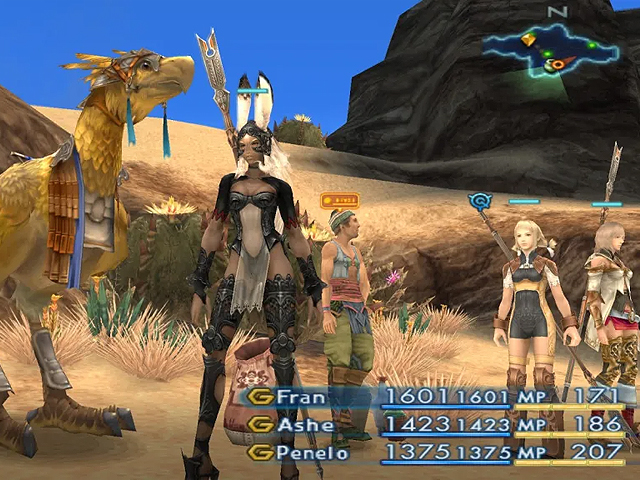
After taking the series online with Final Fantasy XI, Square Enix took a more traditional approach with the sequel. “Traditional” is something of a misnomer, however, as significant innovations could be seen in every facet of the game. Not only did Final Fantasy XII feature an open world and a controllable camera (a first for the franchise), but it also eliminated random encounters entirely. Combat unfolds in real-time on the game’s overworld, and the battles themselves can be automated via the “gambit” system. Your party members will automatically attack if left to their own devices, and you can also pre-program them to perform specific actions if certain conditions arise. You might instruct them to use healing items if an ally’s health drops below 50%, for instance. Likewise, you could have them use fire spells against enemies who are vulnerable to the element. You can always take control over the actions if the need arises, but it’s a lot of fun to plan ahead and come up with contingencies for every scenario. I give the developers tremendous credit for doing something different with Final Fantasy XII. Its influence can be seen in Final Fantasy VII Remake and Xenoblade Chronicles, and I think fans would be more accepting of the autonomous battle system today than they were in 2006. The game has held up exceptionally well, for the most part. The overall story isn’t especially engrossing and some of the characters probably don’t need to exist, but the dialogue is well-written and it still has one of the best settings of any Final Fantasy. The world is huge without feeling empty, and I was taken aback by the sheer density of the game. Final Fantasy XII was never positioned as a killer app for the PS2 and it arrived mere weeks before the launch of the PS3, but I maintain that its the most slept-on game in the series.
9
SoulCalibur II
2003
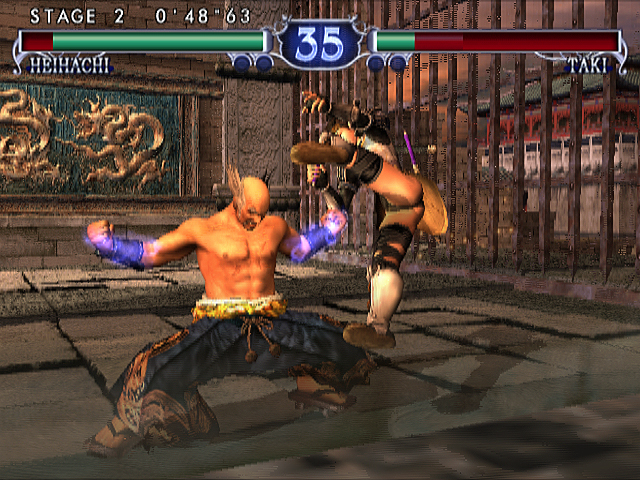
SoulCalibur is one of the most revolutionary 3D fighting games of all time, and it introduced several innovative concepts to the genre. The sequel built upon many these ideas and refined the gameplay in a number of areas. Walled arenas, a clash system, and revised guarding mechanics are among the changes introduced in the sequel. Naturally, SoulCalibur II also boasts improved graphics and a handful new characters. Like the original SoulCalibur before it, the console versions of SoulCalibur II have a ton of features that weren’t seen in the arcades. Perhaps the most significant of these features is the new “Weapon Master Mode” in which players compete for experience and money in order to unlock additional weapons, outfits, artwork, and videos. Each console version of SoulCalibur II also featured an exclusive character. The Xbox version featured Todd McFarlane’s Spawn, the GameCube version featured Link, and PlayStation 2 owners got old man Heihatchi from Tekken. The PS2 version suffers from occasional framerate issues, but it’s still one of the best-looking games on the platform. At the end of the day, SoulCalibur II is one of the deepest and most rewarding 3D fighting games of its generation regardless of what console you play it on.
8
Metal Gear Solid 3: Subsistence
2005
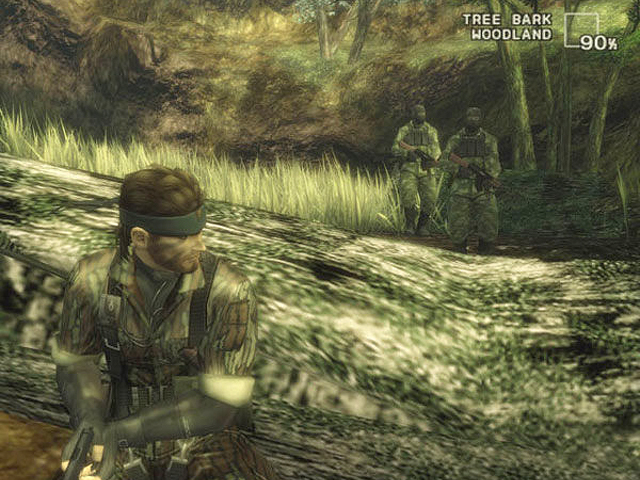
Metal Gear Solid 3 is arguably the most compelling game in the series. The jungle setting is a perfect fit for the stealth-based gameplay, and the vibrant ecosystem feels more immersive than the lifeless industrial areas that defined previous games. Generally speaking, the environment plays a much larger role than it does in previous outings. Players are not only encouraged to blend in with their surroundings, but they also have to rely on the jungle for sustenance. If players don’t find enough food to eat, their stamina will be depleted and their abilities will decline. Needless to say, a grumbling stomach is not exactly beneficial to someone who is trying to be stealthy. Since Snake Eater is a prequel, its story helps explain the origins of several Metal Gear characters and gives us a better understanding of the entire Metal Gear mythos. In true Metal Gear fashion, Snake Eater contains numerous plot twists and over-the-top characters. I love the 1960s vibes, and Snake Eater has all the trappings of a great Bond film. Subsistence is essentially an enhanced version of Snake Eater with new content and a host of quality-of-life improvements. The new third-person camera is more immersive than the standard top-down view, for instance, and it gives me a newfound appreciation of the environments. I’m also fond of the new Snake vs. Monkey minigame, which is the Metal Gear/Ape Escape crossover that I never knew I wanted.
7
ICO
2001
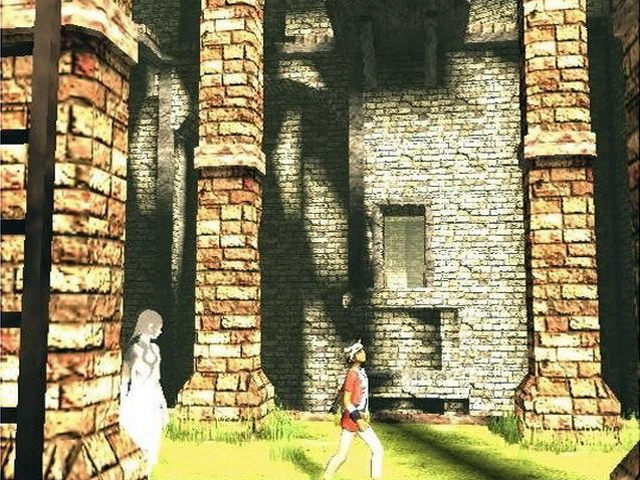
ICO is one of the most atmospheric games of all time, and it’s easy to understand why it’s often brought up in the “games as art” debate. Its minimalistic approach eliminates most of the superfluous gameplay elements that afflict so many other releases. The game’s premise revolves around a cursed boy and an ethereal princess who have been imprisoned. Although these characters speak different languages, they are united by a common plight and must work together to escape from their prison. Much in the same way that the characters are able to form an emotional bond despite not being able to communicate with each other, the game itself is able to achieve a high level of immersion without having to rely too heavily on dialogue or cinema scenes. By and large, the game’s environments are able to define the entire story. The gameplay in ICO is mostly focused on environmental puzzles. Players aren’t given a lot of direction in the game, however, and they are instead encouraged to exercise logic and pay attention to their surroundings. I appreciate how it relies on organic storytelling rather than immersion-breaking exposition dumps, and it proves that games can have a cinematic quality without trying to emulate Hollywood movies. Without question, ICO is one of the most emotionally gripping games to ever grace the PlayStation 2.
6
Burnout 3: Takedown
2004
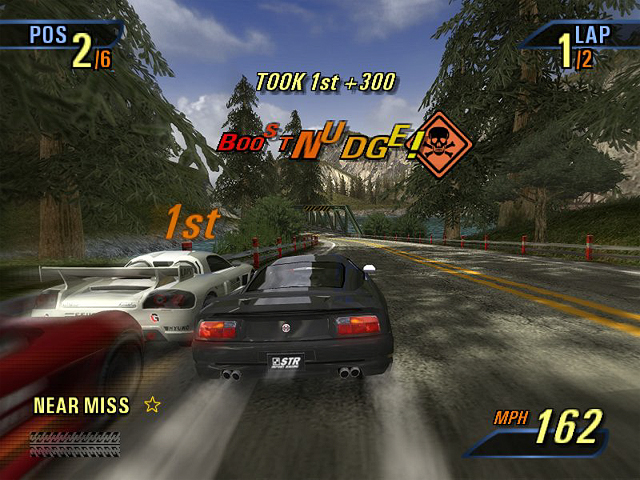
When most people think of great racing games on the PlayStation 2, the Gran Turismo series is likely the first thing that comes to mind. Burnout 3 may not be as realistic as Gran Turismo, but it’s faster, it’s more action-packed and – most importantly of all – it’s more fun. Burnout 3 is easily one of the best-looking PS2 games (it runs at a silky-smooth 60 frames-per-second and has widescreen and progressive scan support) and the special effects are simply amazing. The sense of speed in the game is incredible, and you can almost feel the impact of the crashes. Weaving in and out of traffic is exhilarating, and driving head-on into oncoming traffic can really get the adrenaline flowing. With five different gameplay modes and 173 events to complete, Burnout 3 is one of the most complete racing games ever. There are nearly 70 vehicles to unlock as well, including city busses and fire trucks. The ability for up to eight players to compete against each other online contributes further to the game’s replay value. Burnout 3 is arcade-style racing at its finest.
5
TimeSplitters 2
2002
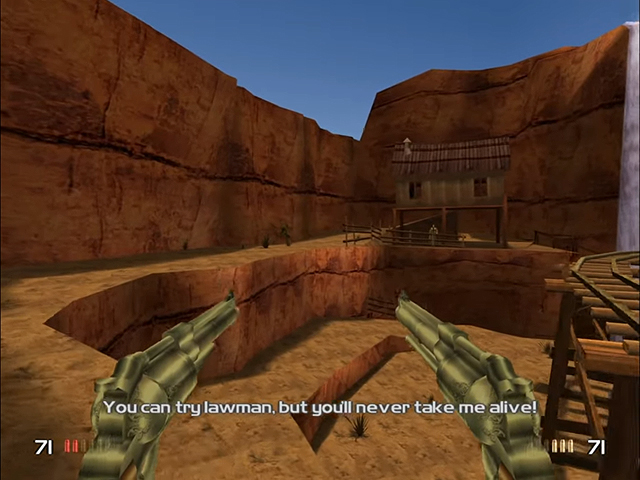
Many of the key players at Free Radical Design had previously worked on GoldenEye 007 and Perfect Dark. TimeSplitters borrows many ideas from these games, and it feels like a spiritual successor in many regards. Although the original TimeSplitters was one of the most compelling first-generation PS2 games, the sequel improved upon it in many ways. The levels were more interesting, the sense of humor was more pronounced, and more options were added to the arcade and multiplayer modes. The time travel theme allows for incredible diversity. During the game, players will engage gangsters in a prohibition-era Chicago, take on gunslingers in the wild west, chase wild monkeys through Aztec ruins, battle machines in a robot factory, and encounter aliens in a space station. Players will also find weapons appropriate for each era. (Tommy guns, crossbows, flamethrowers, plasma rifles, and bricks are among the dozens of weapons featured in the game.) In addition to the central missions, TimeSplitters 2 contains additional “arcade” and “challenge” modes that encompass a wide variety of scenarios. No FPS would be complete without multiplayer options, and TimeSplitters 2 really shines in this department. By using the PS2’s System Link, up to sixteen players can compete simultaneously. The death matches themselves are highly customizable, and players can even create their own maps! The game also features a co-operative mode in which two players can take on missions together. All three TimeSplitters games were amazing in their own right, but TimeSplitters 2 has the most replay value. It’s easily the best first-person shooter on the PlayStation 2.
4
Grand Theft Auto: San Andreas
2004
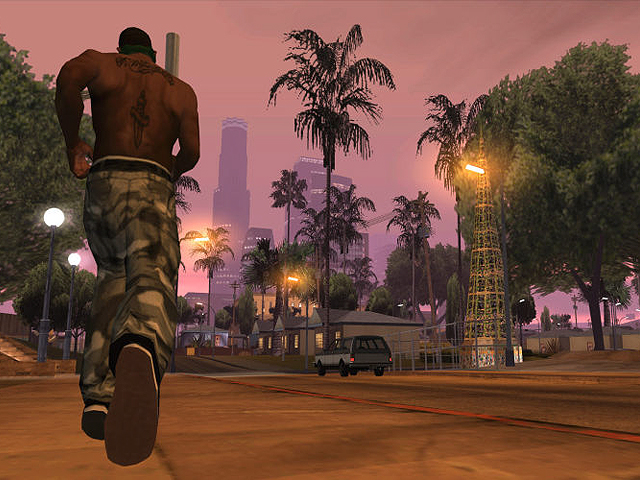
Grand Theft Auto III was a breakthrough title in every sense of the word and helped revolutionize the entire industry. Its large, open-world environments were basically unrivaled at the time, and the amount of freedom given to players was nothing short of extraordinary. Vice City built upon the same basic formula and brought an awesome 1980s theme to the franchise, and San Andreas pushed the envelope even further. With three different cities to explore, San Andreas is four times larger than Vice City. The gameplay mechanics were also refined in many regards. The ability to swim and climb walls made the game feel even more liberating than its predecessors. San Andreas features over 200 cars to steal – including bicycles, dune buggies, combines, street sweepers, and hovercrafts. The ability to customize vehicles adds even more variety to the game. Players can customize their own character, too. Clothing, haircuts, and accessories can all be personalized, and the physical appearance of your character is actually affected by diet and exercise. It’s easy to see why San Andreas is the best-selling PlayStation 2 game of all time. You simply aren’t going to find a more ambitious game on the system.
3
Dragon Quest VIII: Journey of the Cursed King
2004
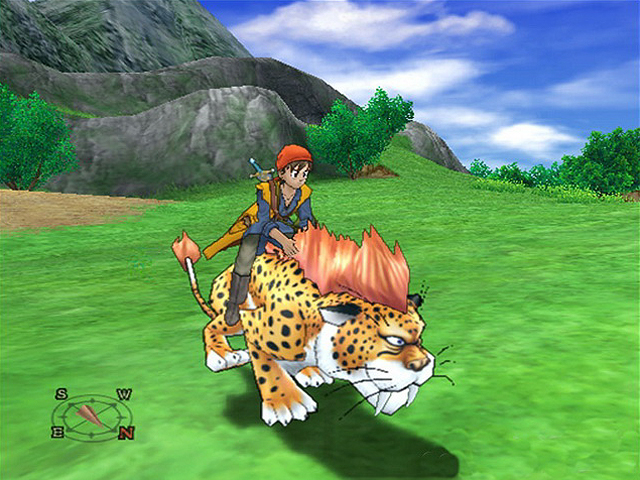
If you’re a fan of Square Enix, then you certainly had options when it came to the PlayStation 2. After all, the console saw new entries in the Final Fantasy series and gave birth to new IPs like Kingdom Hearts. While other franchises are constantly reinventing themselves, Dragon Quest seldom ventures far from home. Dragon Quest VIII‘s turn-based battle system is a relic of the past, and the story relies on familiar tropes. Like its predecessors, the game features designs by acclaimed manga artist, Akira Toriyama. The characters are remarkably energetic, and the cel-shaded graphics capture the spirit of the original artwork in ways that earlier entries couldn’t. Although the plot is once again centered around a silent protagonist, the supporting cast is charismatic enough to carry the weight of the story. Dragon Quest VIII isn’t entirely derivative, however, and it introduces a handful of new gameplay elements. Alchemy pots let you blend various items together, for example, and a new skill development system allows players to customize their characters to their liking. At its core, Dragon Quest VIII stays true to itself. From a thematic standpoint, it doesn’t feel drastically different than its 8-bit predecessors. It’s a fun and rewarding adventure that’s both engaging and charming. If nothing else, it’s refreshing to see an epic RPG that doesn’t take itself too seriously.
2
Shin Megami Tensei: Persona 4
2008
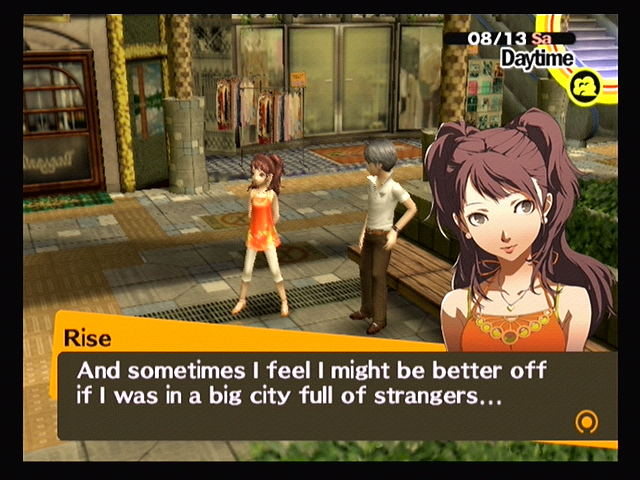
The PlayStation 2 was the system to own if you were a fan of Japanese RPGs in the 2000s. Sony’s legendary console was home of Final Fantasy and Dragon Quest, so it’s a remarkable achievement for Shin Megami Tensei: Persona 4 to be recognized as the best JRPG of its generation. If you’re somehow unfamiliar with the franchise, Persona blends traditional RPG conventions with social sim elements. You’ll spend a lot of time leveling up your party and crawling through dungeons, but you’ll devote most of your attention to forming “social links” with other characters. The game revolves around a group of high school students who are investigating mysterious murders in a small rural town. There are also moments of levity, however, and you’ll get to participate in various extracurricular activities during your year-long visit. You might decide to join the basketball team, volunteer at a daycare, or hang out with your friends at the food court. If you’d prefer, you could also learn how to fish, get your driver’s license, or plant a garden. The activities change from one day to the next, and how you spend your time is up to you. (If you’re anything like me, you’re top priority will be choosing which one of your classmates you want to bang.) The game is cut from the same cloth as its immediate predecessor, but I felt a stronger emotional attachment to the characters in Persona 4 and the small-town vibe really resonated with me. I was reluctant to highlight Persona 4 on this list, since an enhanced version of the game was subsequently released. Most of the top PS2 games can be played on other platforms, however, and it’s not fair to overlook a game just because a better version of it can be found elsewhere. Although I wouldn’t recommend Persona 4 over the Golden Vita version, it’s still my favorite JRPG on the PS2. It’s the most stylish game on the system, and the extraordinary soundtrack hits all the right notes.
1
Resident Evil 4
2005
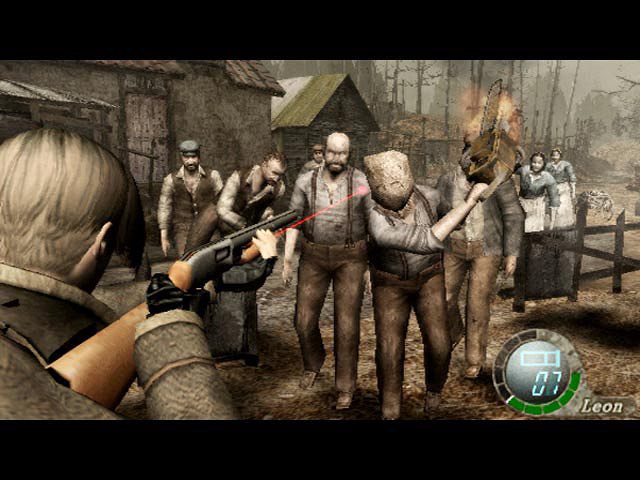
Resident Evil 4 revolutionized the survival/horror genre. The game’s new over-the-shoulder perspective was more liberating than the static camera angles that previous Resident Evil games used, and it gave players more control over their movement. The aiming and shooting dynamics were also retooled and allowed for more precision. These new conventions put more focus on action and allowed for epic shootouts involving crowds of zombies in open areas. Improved enemy AI, an new inventory system, and one awesome boss battle after another round out the reasons why Resident Evil 4 is held in high acclaim. During the development phase of Resident Evil 4, the game’s director (Shinji Mikami) insisted that he’d cut his head off with a chainsaw if the game were to ever be released on a system other than the GameCube. Much to the chagrin of PlayStation 2 owners, Mikami had to eat his words. Characters in the PS2 version were remodeled with fewer polygons, and some of the more complex lighting and texture effects from the GameCube were removed. The PS2 version made up for these technical differences by including new bonuses and a handful of exclusive side missions. The PlayStation 2 was the dominant console of its day, so it would have been tragic if it missed out on the best game of the generation.

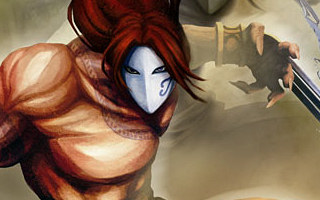
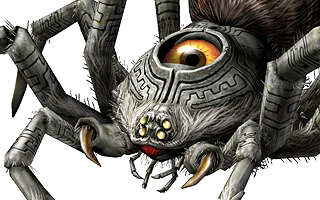
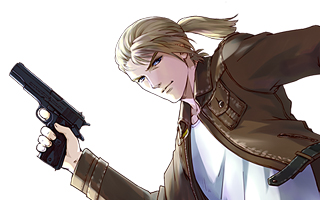
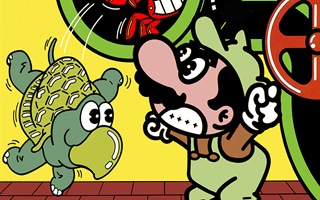
Do you agree with this list? Let us know what you think by leaving a comment below. Your opinion matters!